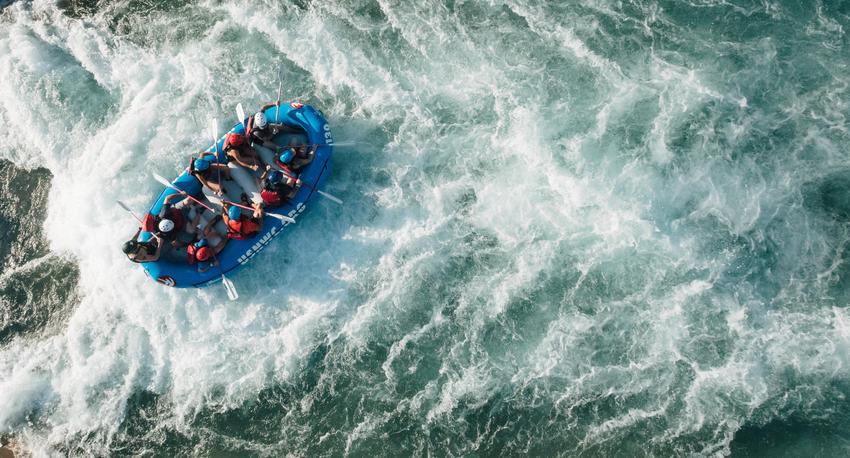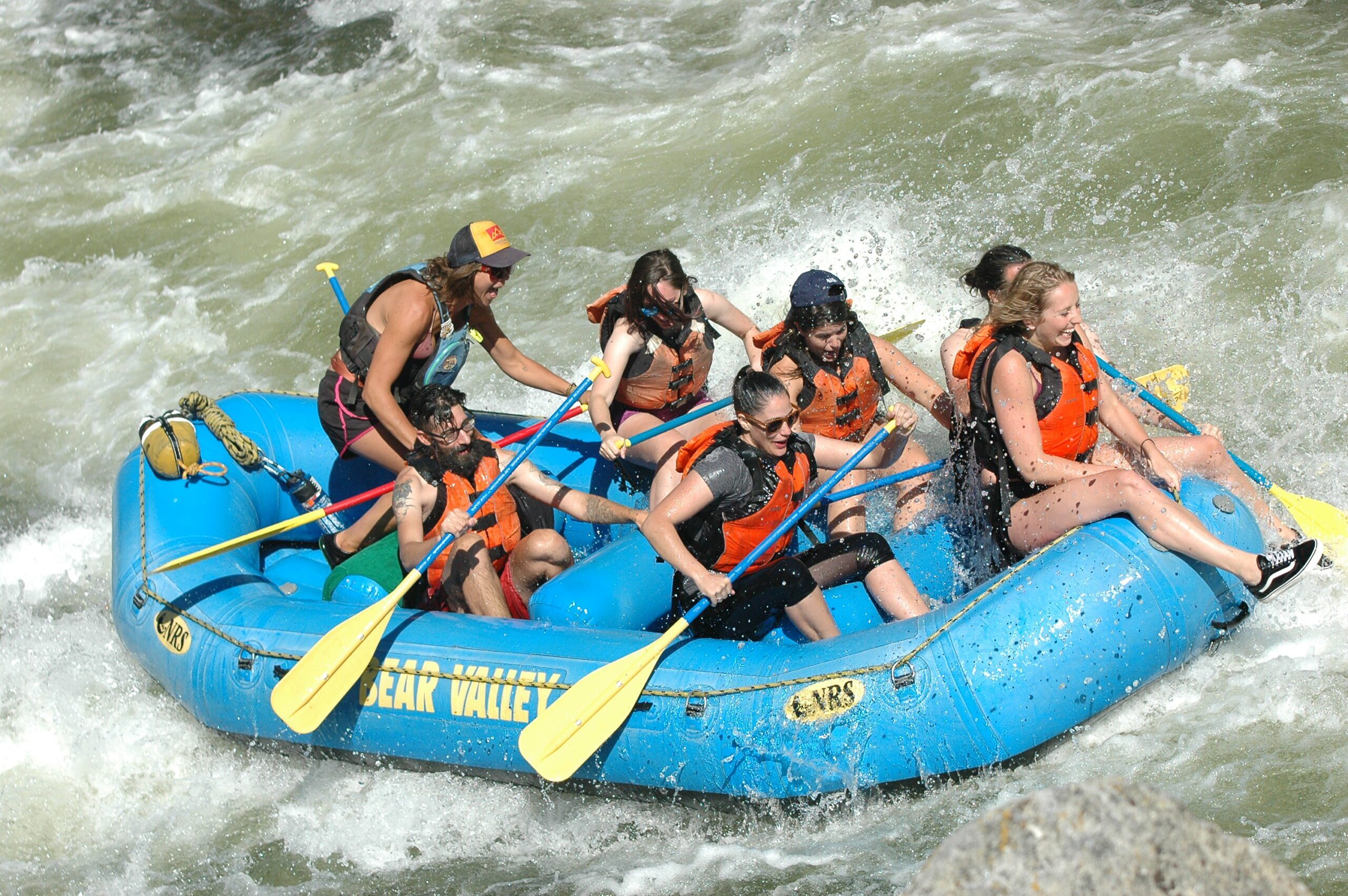The Ultimate Adventure: Water Rafting Tips and Techniques
Getting started on a water rafting adventure is an awesome experience that requires a blend of ability, preparation, and respect for nature's powerful pressures (White Water Rafting Colorado). As the thrill of the river thrusts you ahead, browsing with twists and transforms, the art of water rafting introduces itself as an examination of both physical prowess and mental skill. From choosing the appropriate gear to comprehending the nuances of paddling techniques, the trip down the river holds accomplishments and obstacles waiting to be dominated. What genuinely sets apart a beginner from a skilled rafter lies not simply in the mastery of skills, but in the finesse with which one approaches the uncertain dance with the currents.
Important Equipment for Water Rafting
To ensure security and convenience throughout water rafting trips, it is vital to outfit oneself with the important equipment customized to this daring task. The first and most vital piece of equipment is a well-fitted personal flotation protection tool (PFD) or life vest. This is non-negotiable for all rafters, as it provides buoyancy in case of unexpected immersion in water. In addition, a strong safety helmet is vital to protect against head injuries, specifically in harsh waters or if thrown off the boating.
Furthermore, appropriate footwear is vital for maintaining excellent grasp and protecting the feet from unsafe surfaces or sharp rocks. Neoprene booties or water shoes are recommended for this purpose. It is also recommended to use quick-drying clothing, such as a wetsuit or breakout guard, to control body temperature and avoid hypothermia in cold water problems.
Finally, a dependable paddle is required for steering via the water efficiently. It ought to be light-weight yet long lasting to endure the rigors of rafting. By purchasing these vital pieces of equipment, rafters can enjoy their experience on the water with self-confidence and assurance.
Choosing the Right Rafting Course
When preparing a water rafting adventure, picking the proper rafting route is vital for a delightful and risk-free experience. Aspects such as the level of difficulty, water conditions, and the size of the route must all be considered prior to beginning on your journey.
Primarily, assess your team's ability level and experience. Various rafting routes are categorized based upon problem degrees ranging from Course I (simple) to Course VI (hazardous and extremely difficult) It is necessary to pick a path that lines up with the capacities of all individuals to ensure every person's security and pleasure.
In addition, think about the water conditions of the course. Some courses might have calm waters suitable for beginners, while others may have strong currents and challenging rapids that require advanced skills. Researching the water levels and prospective risks of the path in advance can help you make a notified decision.
Lastly, take into consideration the length of the rafting course. Longer routes might need even more time and stamina, so pick a course that fits within your team's duration and physical abilities. By carefully picking the right rafting course, you can establish on your own up for a thrilling and memorable journey on the water.
Safety And Security Preventative Measures on the Water
Thinking about the this significance of picking the appropriate rafting route for a satisfying and risk-free experience, it is crucial to prioritize safety precautions on the water to mitigate prospective threats and make certain a successful adventure. Before beginning on a water rafting trip, make sure all individuals put on appropriately suitable individual flotation tools (PFDs) and safety helmets to safeguard versus accidents. It is crucial to pay attention diligently to the overview's security briefing, which commonly covers paddling techniques, what to do in case the plethora turns, and how to assist others if needed. Keeping communication with the guide and fellow rafters is vital throughout the trip to coordinate informative post activities and respond promptly to any kind of guidelines or signals. In case of a person dropping overboard, follow the overview's instructions for swift and reliable rescue procedures. Be mindful of the water problems, such as rapids and obstacles, and adapt your paddling methods accordingly to navigate safely through the training course. By sticking to these security precautions, you can enhance the overall experience and decrease potential hazards while water rafting.
Mastering Paddling Methods
Developing efficiency in paddling techniques is necessary for navigating through varying water problems and making certain an effective water rafting experience. White Water Rafting Colorado. Proper paddling not just helps in steering the boating successfully however likewise adds to the general control and synergy required for a delightful and safe trip
Among the fundamental paddling strategies is the forward stroke. This stroke includes dipping the paddle blade completely into the water and drawing it back along with the plethora, supplying propulsion and guiding. The backward stroke, on the various other hand, is vital for slowing or reversing down the raft. By grasping the forward and backward strokes, rafters can successfully control the rate and instructions of the raft.

Tips for Handling Rapids Like a Pro
To stand out in browsing tough river problems, experienced water rafters use their mastered paddling techniques with precision and skill when taking care of rapids like seasoned professionals. When facing rapids, it is essential to keep a solid and collaborated paddling rhythm. This rhythm helps the boating maintain its course and security in the middle of the stormy waters. Additionally, it is important to prepare for the motions of the plethora and adjust quickly to transforming problems. Experienced rafters use their understanding of river dynamics to proactively readjust their paddling technique, ensuring reliable maneuvering with rapids.

Verdict
Finally, water rafting requires important gear, careful route option, safety and security preventative measures, grasping paddling methods, and dealing with rapids with competence (White Water Rafting Colorado). By complying with these methods and ideas, adventurers can guarantee a successful and delightful rafting experience on the water. Remember to constantly prioritize safety and security and be planned for the difficulties that included navigating via rapids. With technique and understanding, anyone can come to be a proficient water rafter.

Considering the relevance of choosing the right rafting course for a risk-free and enjoyable experience, it is essential to focus on safety preventative measures on the water to reduce potential threats and make sure a successful journey. Eventually, honing paddling strategies is essential to a awesome and successful water rafting adventure.
In final thought, water rafting requires crucial gear, careful course choice, safety preventative measures, mastering paddling methods, and handling rapids with expertise.